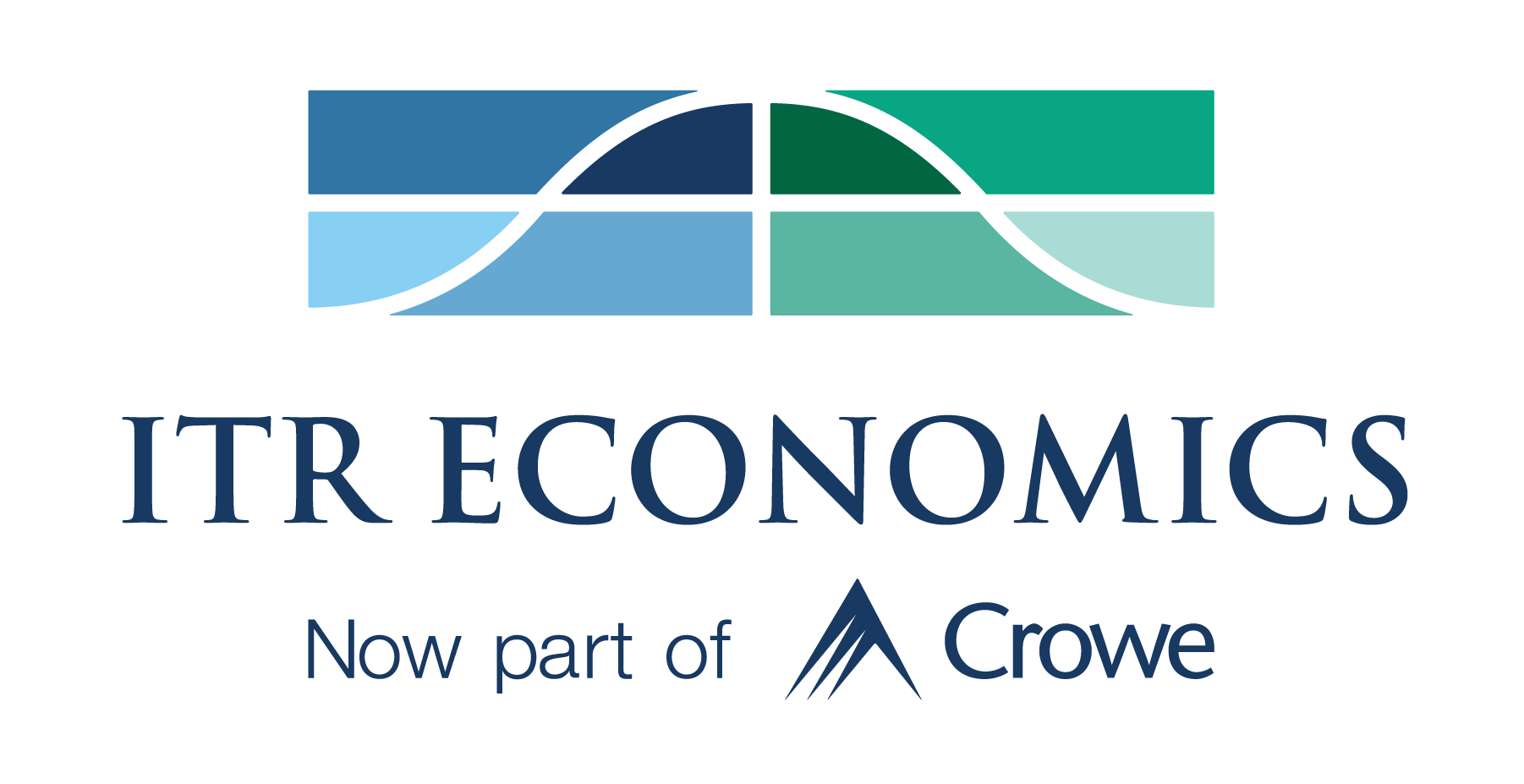- Mon - Fri: 8:30 - 5:00
- +1-603-796-2500
- ITR@itreconomics.com
November 24, 2023
- Home
- portfolio
- TrendsTalk
- November 24, 2023
with Taylor St. Germain
2024 FROM A B2B PERSPECTIVE
US Nondefense Capital Goods New Orders is an economic indicator that correlates closely with many companies – including yours, potentially. How does this indicator factor into our 2024 outlook and our expectations for business-to-business spending? Tune in to a new episode of TrendsTalk to find out!
The below transcript is a literal translation of the podcast audio that has been machine generated by Rev.
Hi everyone. My name’s Taylor St. Germain with ITR Economics, and welcome to this edition of Trends Talk. This week I wanted to discuss US non-defense capital goods, new orders. That’s a really fancy way of saying business to business activity or CapEx. This is a series that we’ve talked about before on previous trends talks. It’s come up in the conversation, but I really wanted to focus an episode around this data series. The reason being, when I’m working with our individual clients and correlating their data sets to economic indicators, US non-defense capital goods new orders is often one of the highest correlated indicators to the businesses that we interact with. Again, given the fact that it’s a benchmark for B2B or CapEx activity, it probably makes a lot of sense that as it relates to businesses in terms of correlation values, that there’s a strong correlation between company data in a data series like this.
So that’s why I wanted to talk about this series today. You’ve heard me discuss industrial production in this mild recession that we have forecasted for 2024, while US non-defense capital goods new orders is almost a one-to-one relationship with industrial production. Not quite that, but an extremely high correlation value. However, the difference between industrial production and non-defense capital goods new orders is that industrial production is a volume-based series, while non-defense capital goods new orders is a dollar based series. So we get to see inflation impacts in this B2B economic metric.
So I wanted to talk about where CapEx activity or B2B activity is going in 2024, and as you can probably guess, it’s a mild recession for CapEx or B2B activity as well. Again, given that correlation to the broader industrial economy. So we do have this pullback in activity and we’ve been seeing the data on a growth rate basis retreat closer and closer to zero as we’ve progressed later into 2023.
So it’s likely that in 2024 businesses will be dealing with delayed orders, delayed projects, even cancellations as businesses pull back in their overall CapEx spending. So let me call out a few metrics that are pointing to this pullback in CapEx or B2B activity.
The first is profits, and I won’t spend much time on this because we’ve talked about profits. We talked about profits on the last episode, the episode prior, and profits leads CapEx activity by nine months. The rate of change for profits, the quarter-over-quarter growth rate when comparing to the year-over-year growth rate for CapEx, that’s where you get that nine month lead time and with profits already coming in negative on a rate of change basis given that lead time, it’s pointing to some contraction in CapEx in 2024. Pretty logical connection there. As businesses are under financial pressure from a bottom line standpoint, it’s not surprising that they’ll lower their CapEx spending. So that’s the first relationship that’s pointing to declining CapEx activity in 2024.
The second relationship that I wanted to call out is the relationship between CapEx and US machinery capacity utilization rates. And so when I say a utilization rate, we’re really measuring output over capacity. And if you take this machine capacity utilization rate, the 1/12 rate of change or month over month rate of change, and you overlay that with CapEx, the utilization rate leads by about five months. That utilization rate at this point on that 1/12 rate of change basis is negative down about 4.8%. So that means we’re utilizing less capacity, or if you’re focusing on the numerator instead, we’re producing less… We’re putting forth less output than where we were compared to the same month one year ago. And given that five month lead time that that has to CapEx, that’s also pointing to a pullback in CapEx next year.
So we have profits declining that points to CapEx being down in 2024. We have utilization rates for machinery down which points to decline in 2024 for CapEx. And then the last relationship that I wanted to call out is exports of goods to the world. If you overlay the exports quarter-over-quarter growth rate with the CapEx year-over-year, growth rate exports leads by about four months, slightly more than a quarter, and exports are also down on that rate of change basis, about 7.7% as I’m talking to you all here today.
So these are three highly correlated indicators to non-defense, capital goods, new orders, or CapEx, or B2B activity that are all pointing to a pullback in 2024. So again, what does this mean for all of us? Well, this means that businesses are more hesitant to spend to invest as we look at 2024 and especially as we look over the next three to four quarters. So be prepared for that, be prepared for some delayed orders, some cancellations as businesses pull back.
Now, from our perspective, 2024 is actually a great time to be investing because you’d be investing in the low point of the cycle to prepare for growth in ’25 and ’26. A little bit of a interesting relationship there, which is that at the time where we’re seeing a pullback in CapEx activity is really a time that we at ITR Economics believe you should be investing because of the growth that we see coming in ’25 and ’26. But of course, it’s easy for an economist to say that higher borrowing costs are driving a lot of these challenges, and even though the Fed’s not raising rates as we’re speaking here today, the impact of the previous rate rise clearly has an impact on some of this declining activity as we look into next year.
If you’d like to see these relationships, these indicators that I just call out visually, Brian Bolio, our Chief Economist and CEO shared these charts in the September executive summary in the ITR trends report. So please check that out if you’d like to see exactly what I’m discussing here visually on a chart and really understand these correlations and lead times.
I hope you found this information helpful. I hope everyone has a great Thanksgiving. We’ll be back with you the week after Thanksgiving with more economic information coming your way. But until then, I hope everyone has a safe holiday. I’m Taylor St. Germain with ITR Economics. Thanks for joining me on this episode of Trends Talk.




